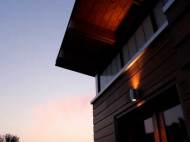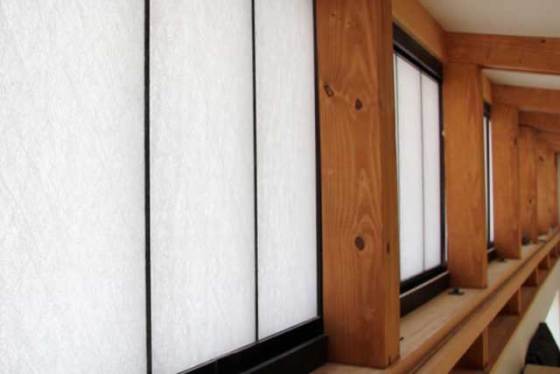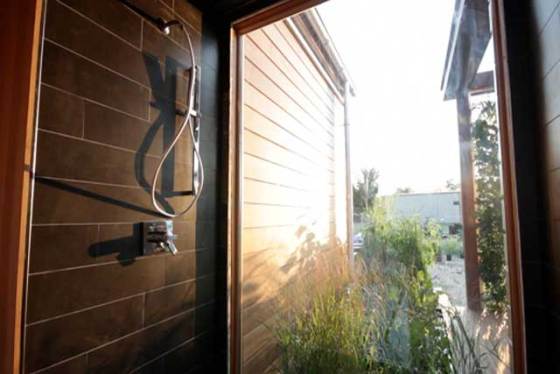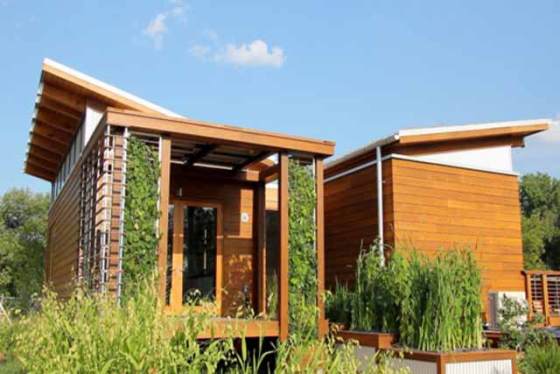Team Maryland WaterShed wins the Solar Decathlon 2011 (part 2)
 As we reported in our previous article, Solar Decathlon 2011 ended last weekend and the team from the University of Maryland won with their WaterShed house. Due to a long list of sustainable features incorporated into the house, we decided to split the article in two parts by writing about the building and the materials in the first part and leaving the sustainable features in its engineering and living systems for the second part.
As we reported in our previous article, Solar Decathlon 2011 ended last weekend and the team from the University of Maryland won with their WaterShed house. Due to a long list of sustainable features incorporated into the house, we decided to split the article in two parts by writing about the building and the materials in the first part and leaving the sustainable features in its engineering and living systems for the second part.
WaterShed house has a split-butterfly roof, which is well-suited to capture and use both sunlight and rainwater. The photovoltaic array on the house harvests enough solar energy to power it throughout the year. 36 panels mounted to the standing seam metal roof and 6 panels integrated with the garden deck pergola generate up to 9.2 kW of DC power. Solar thermal array provides hot water for all the domestic needs.
The central controller has access to 40 sensors and 35 control elements which allow the owner to monitor and control performance related to heating and air conditioning, lighting, hot water, and solar power. Programmable lighting systems allow creation of different lighting scenes for different house activities, and LED lighting ensures lower energy consumption meant for lighting.
Strategically placed windows and doors, along with translucent clerestories along the north and south facades, allow plenty of natural lighting to enter. The high-efficiency doors and windows manufactured by Loewen have U-factors of .30 to .31 and solar heat gain coefficient which ranges from .17 to .25, allowing abundant daylight to enter while minimizing heat gain from solar exposure. Similarly, the translucent clerestory wall panel system from Major Industries (U-factor of .22) provides a source of diffuse illumination along the length of each module without the energy consequences of transparent glazing.
UltimateAir RecoupAerator 200DX energy recovery ventilator (ERV) provides controlled flow of fresh air, and it is capable to transfer heat and humidity between fresh and stale air to save energy (96% energy recovery and 75% transfer of humidity). Heat exchanger for excess solar thermal (HXEST) allows excess heat from the solar thermal array to be used for supplementary space heating. Heat exchanger, radiant floor and ceiling fan provide supplemental heating and cooling reduce the latent load on the mini-splits and increase the overall efficiency.
Patent-pending indoor liquid desiccant waterfall (LDW) is another example of a great sustainable feature that could be used in our homes. Basically, it is a desiccant dehumidifier which cools down the house by lowering humidity. Unlike traditional dehumidifiers that condense moisture in the air, a desiccant system actually absorbs the air’s moisture, pulling it into the liquid desiccant and then diverts the moisture out of the system by heating the liquid, re-concentrating the desiccant to cycle back again into the house.
Green roof is used to retain rainwater and provide additional insulation which helps in climate control of the house. Green walls are used to provide shade and food. Yes, the vertical garden grows vines with blackberry, passionflower, trumpet vine and grape (Seedless Thompson, Concord). Aside protecting the glass kitchen doors from overexposure to the strong western sun, the vertical garden also filters particulates and toxins from the air.
WaterShed house has a small garden with vegetables and herbs, and it enables the residents to save money while embracing a more sustainable and intentional lifestyle requiring significantly less energy for food production. WaterShed’s filtration wetlands remove pollutants (such as soap) from grey water and are located to the west of the bathroom. Wetland plants are also used in WaterShed’s ‘retention wetlands’ in order to help keep the stored water clean. Low-flow fixtures, dual flush toilets and high-efficiency appliances are used to lower the water consumption.
The landscape features native plants which are adapted to the climate, promote good health in native animal populations, and can thrive without artificial irrigation, fertilizers or insecticides. Planting with trees, shrubs, large perennials, and grasses instead of a conventional lawn eliminates the need and cost of mowing and reduces maintenance-related carbon emissions, soil compaction, and chemical use. By composting organic wastes and leftovers, the house gains natural fertilizer, reducing the need for chemical fertilizers, which seep into the water table and contaminate water bodies downstream.












Very nice, you can grow your food to cut the costs!
Thought I heard of desiccant dehumidifiers in industry, no?
author
The system is used in industry, however, this is a smaller version which can be fitted inside homes.
Very nice, you can grow your food to cut the costs!